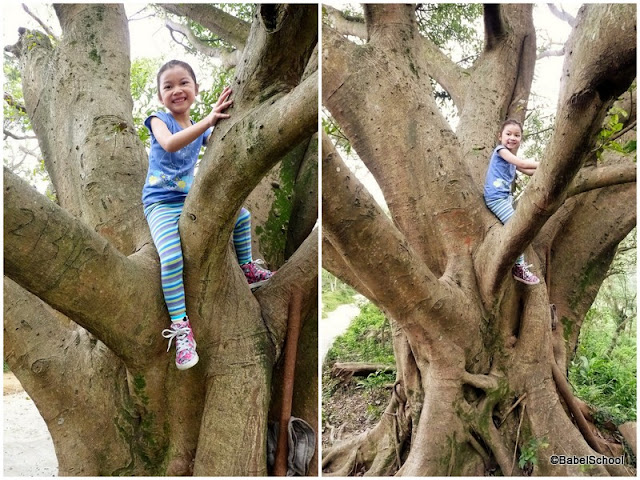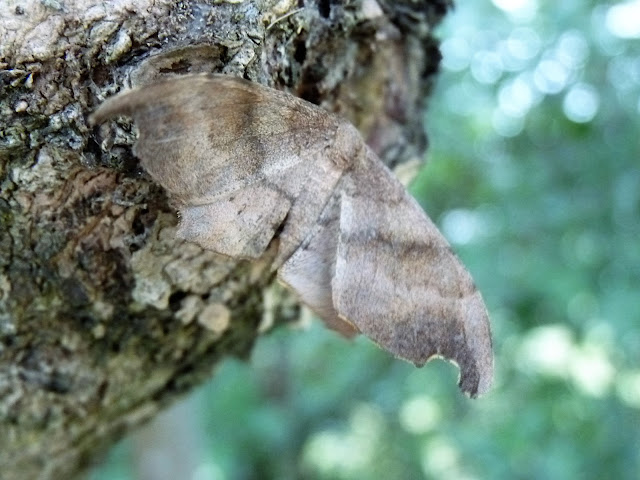This time nature class walk has taken us to another mountain in Taipei. Before the class the teacher warned us that there will be many stairs to climb and ... there really were MANY STAIRS.
Jiantan Mountain 劍潭山 is located behind the famous Grand Hotel in the northern part of Taipei. There are a few places to start the hike, one is right next to the bowling alley opposite the Jiantan MRT Station and the other a bit further up the road from the MRT. We started our hike from the bowling alley (where I could conveniently park my car).
The beginning of the walk was not exciting as they have covered most of the slope with cement and metal nets so as to prevent land slides.
Stairs, stairs and even ...
... more stairs,
that was the theme of the day.
On the way up we passed a few kinda of run down volleyball (?) courts,
two forgotten cuddly toys,
a few old bunkers and military posts,
a nice area to exercise or rest,
a big tree to climb,
and of course a temple.
We also observed plants,
 |
| A leaf that a snail slithered on. |
 |
| Abutilion pictum - Chinese lantern - Flowering maple |
and animals:
 |
| Many praying mantises will emerge from this. |
 |
| Ants' nest. |
And finally we got to our destination, a place called 老地方 - The Old Place.
Usually from the top one can see far and wide the city of Taipei, but on the day we went there the air was not clear and this was all we could see:
All kids were in good spirits:






















A to jest smog czy mgła?
ReplyDeleteTego dnia było pochmurno. Musieliśmy się nawet schronić przed deszczem, wiec przypuszczam, że były to niskowiszące chmury. Smog w Taipei zdarza się, ale raczej jak długo nie pada deszcze, w lecie.
Delete